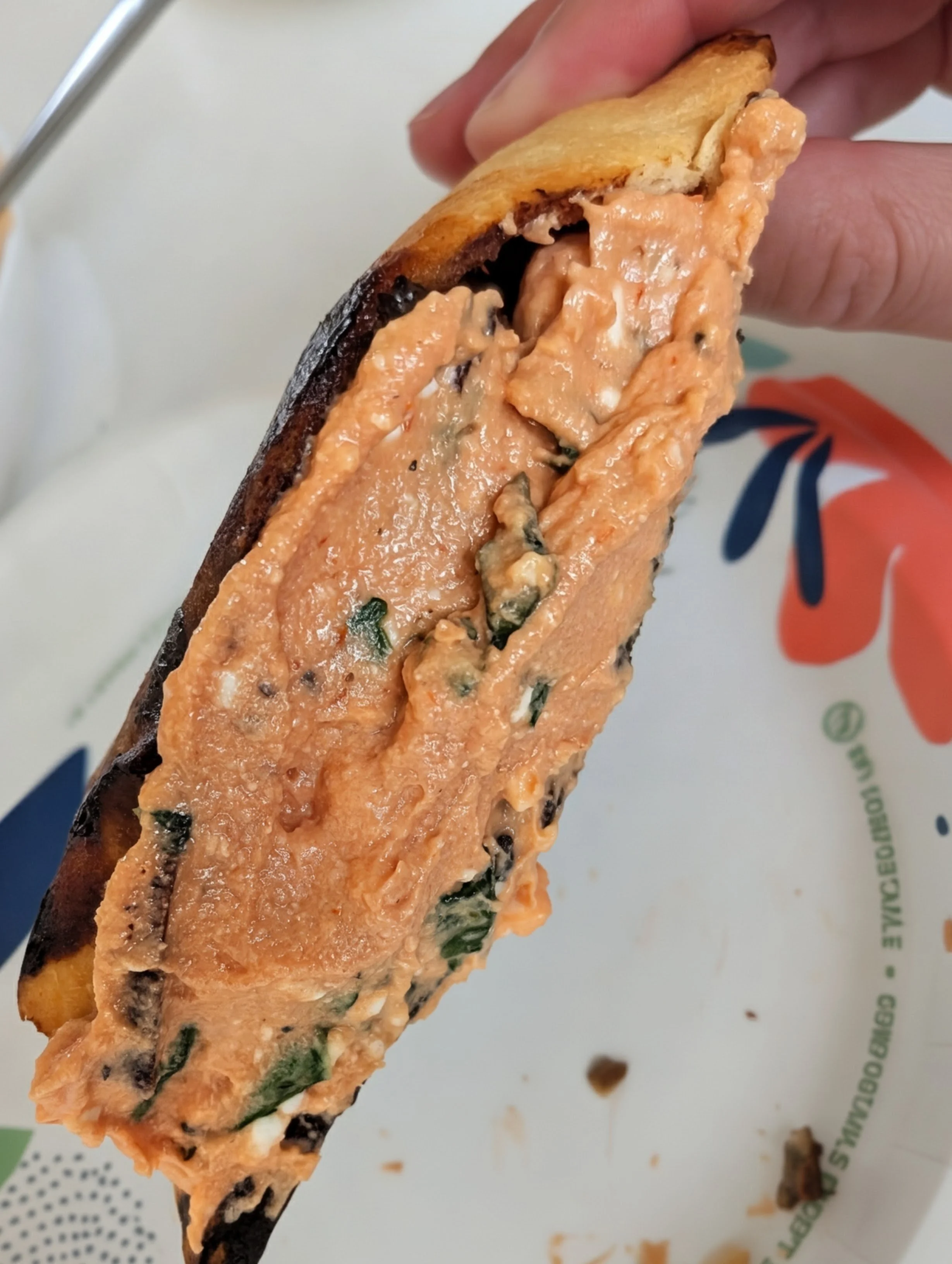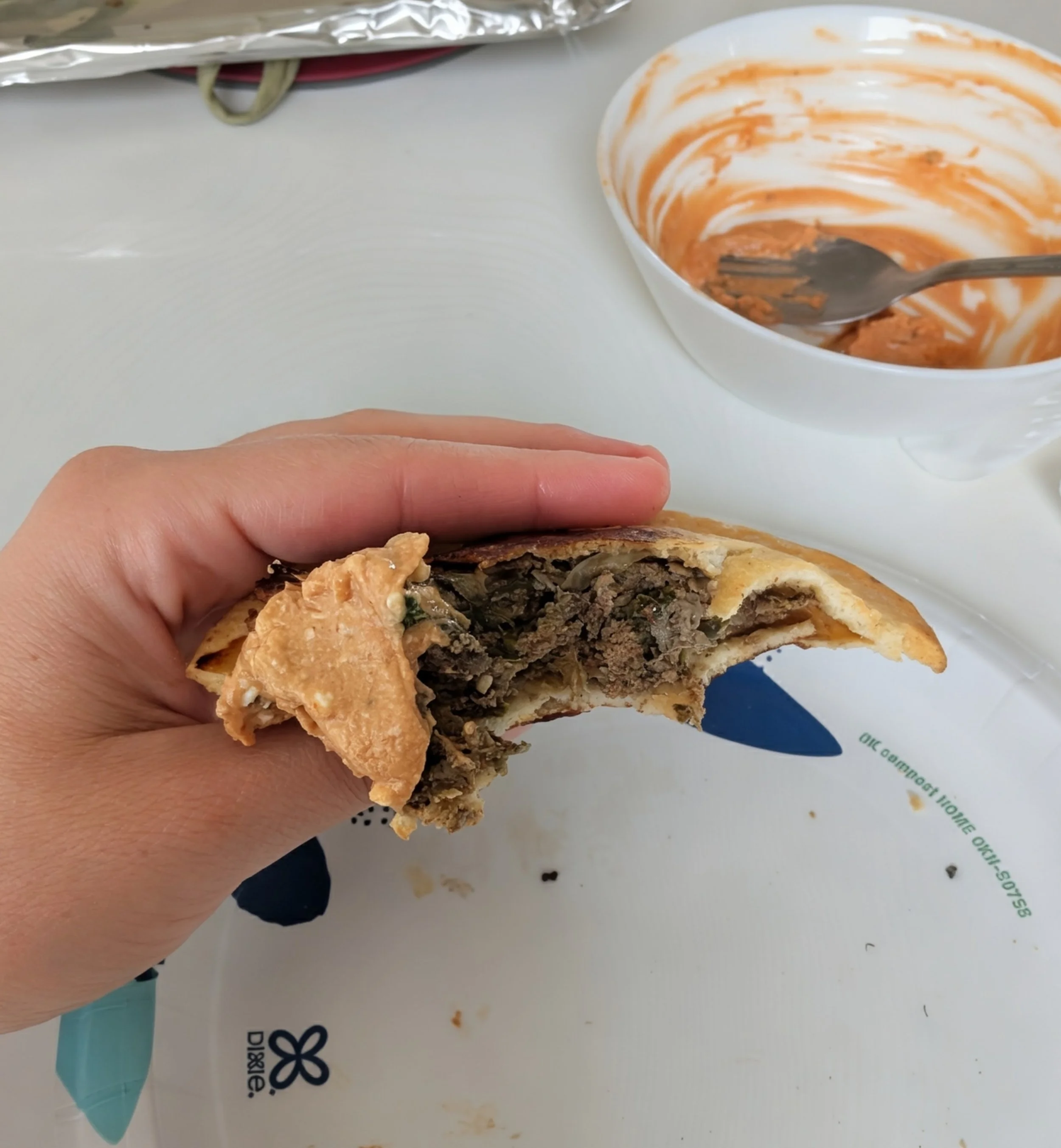Cookbook Diaries #2: Mediterranean Meets Peruvian
Lately, I’ve been cooking my way through The Mediterranean Dish by Suzy Karadsheh, falling in love with the freshness and simplicity of her recipes. But as a Peruvian home cook, I can’t help thinking about the spices and ingredients that feel like home. Ají amarillo, huacatay, and ají panca may not appear in the cookbook, but they keep occupying my thoughts as I cook through these Mediterranean staples.
What started as a cookbook challenge is already becoming something more personal. I’m learning the Mediterranean foundation, but I’m also beginning to imagine how my own cultural flavors could live within these dishes. Rather than keeping the two separate, I find myself moving toward a blend that feels natural and exciting.
Last week, I tried the following recipes:
Easy homemade pita bread
Cheater’s hawawshi pitas
Olive oil and garlic spaghetti with artichokes and olives
Fire-roasted tomato, freekeh, and black-eyed pea soup
Greek-style baked butter beans
I chose these dishes for a mix of reasons, mostly to practice techniques I’ve never attempted and to challenge my comfort zone. For example, I’ve never been much of a baker, and I’ve always avoided lima beans and black-eyed peas because of how they were served in my childhood. I can still remember being handed a plate of dry, starchy lima beans and being told to “eat your plate!” Occasionally, we had black-eyed peas on New Year’s Eve, but I never enjoyed them.
That has changed. Suzy’s recipes gave those ingredients a new life. The flavors were balanced and comforting. Even my husband, who shares my aversion to those beans, went back for seconds and we finished off the leftovers the next day.
Since it was my first time making these dishes, I followed each recipe exactly. But as I cooked and tasted, I couldn’t help thinking about how I would bring in the flavors of my own kitchen next time. Here’s how I’d make them my own in the future:
Easy homemade pita bread with a Peruvian twist:
Add a bit of anise seed or ají amarillo paste into the dough for a lightly spiced, warm flavor.
Brush the tops with infused olive oil; maybe steeped with rocoto chili flakes, oregano, or huacatay before baking.
Serve the pita with a salsa criolla or a quick ají-lime dipping sauce.
Cheater’s hawawshi pitas with a Peruvian twist:
Swap the spice blend with ají panca, cumin, and a splash of red wine vinegar for depth and brightness.
Mix in finely chopped red onion, Peruvian oregano, and a touch of garlic paste, staples in many Peruvian meat fillings.
A spoonful of chopped olives or raisins could echo flavors from Peruvian empanadas.
Olive oil and garlic spaghetti with artichokes and olives with a Peruvian twist:
Add ají amarillo to the olive oil and garlic for a creamy, citrusy heat.
Swap in Peruvian botija olives if you can find them. Their rich, briny flavor adds great contrast.
A squeeze of lime at the end ties it together with a familiar acidic hit.
Toss in some chopped heart of palm (palmito) for a little briny sweetness that pairs beautifully with artichokes and olives.
Fire-roasted tomato, freekeh, and black-eyed pea soup with a Peruvian twist:
Use ají panca or smoked rocoto to boost the smoky depth.
Add a sofrito-style base: sautéed red onion, garlic, tomato paste, cumin, and ají amarillo.
Garnish with chopped cilantro, lime, or a swirl of crema or huacatay oil.
Greek-style baked butter beans with a Peruvian twist:
Add a layer of ají mirasol or ají amarillo paste to the tomato sauce for depth and brightness.
Stir in chopped smoked chorizo or even seco-style herbs like cilantro or parsley for extra dimension.
Top with crumbled queso fresco or a few pickled red onions for a sharp contrast to the richness.
Cooking through The Mediterranean Dish has already taught me so much, not just about ingredients or techniques, but about how much my own culinary instincts are rooted in the flavors I grew up with. Even when I follow a recipe word for word, my mind wanders toward ají amarillo, huacatay, and ingredients like heart of palm that feel like second nature.
I'm learning that I don’t have to separate the two traditions; I can build something entirely new at their intersection. These small adaptations aren’t just substitutions, they’re expressions of identity. And who knows, maybe someday they’ll become recipes of my own.
If you’re curious about the crema I plan to start drizzling on everything, you can find it here (post upcoming!). Let me know if you'd try it, or how you’d make these recipes your own.
Curious what this looked like in real life? I’ve added a few phone snaps at the bottom, kitchen chaos and all.


